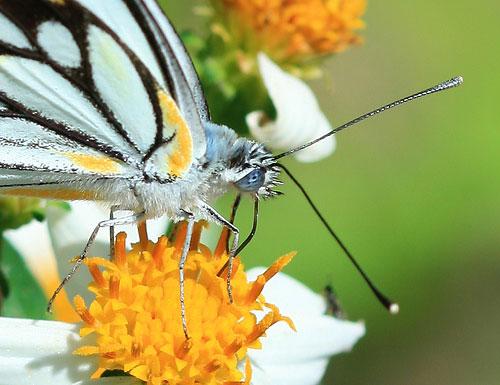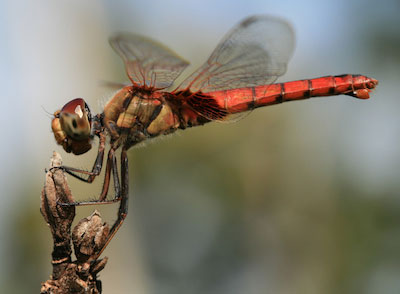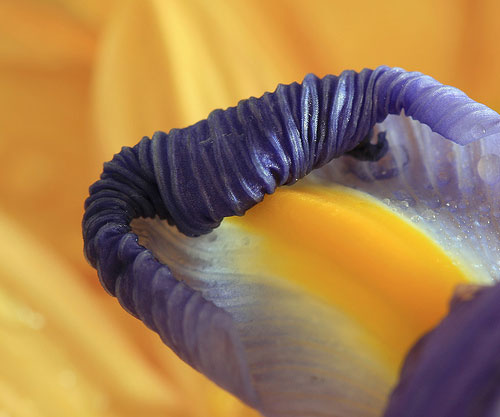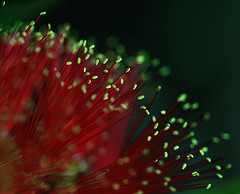I purchased this lens early on in my photography experience and am glad I had a shop assistant who pointed me in the right direction. As it’s turned out, I couldn’t be more happier with the Canon EF 100mm f/2.8 Macro lens. Especially when it comes to photographing small objects, insects and flowers.
Shown below are a few examples of the types of images, as well as the quality you can expect to photograph with the canon 100mm macro lens. As you can see this is one of Canon’s sharpest lenses, as recognized by many professional photographers. Numerous SLR camera magazines and books have also listed it amongst one of the best for portrait photography as well.
If your after technical details, the Canon website has these listed already: Specifications for Canon EF 100mm f/2.8 Macro lens. Anyway as promised, here are a few examples of insect and flower close ups, so you can judge for yourself.
Butterfly macro / close up
Dragonfly macro / close up
Purple flower macro / close up
Hints and tips for using a Canon EF 100mm f/2.8 macro lens
It does take some time getting used to the shallow depth of field, especially when using an aperture setting of f/2.8.
Firstly I found many of my photographs had too little depth of field, or in other words contained too much blur and not enough of the image in focus. You can solve this problem in 4 ways:
- Firstly, you can get used to the extreme depth of field.
Many macro photographers have come to expect an image where the object isn’t totally in focus. Instead, giving a more abstract view of the insect or flower, as shown in the photo below. - You can crop the photograph using an image software program like Adobe Photoshop, so that only the main focus is seen in the end result. Of course doing this, your final image will be much smaller than the original which may make it impossible to print in certain sizes.
- When taking the photograph, try and get as much of the subject within the exact same distance from the macro lens. For example, the image of the macro dragonfly above, is largely in focus due to both the body and head being the same distance from the lens. If I had photographed this insect head on, the body would have been blurred, with only the head in focus. The wings in that specific photo are not in focus, due to one being closer than the point of focus (body) and the other being further away in distance.
- Another way to handle the shallow depth of field is to increase the f stop, to say f/11 for example. This will ensure more of the image is in focus and create less blur in the background.
On the other hand, the shallow depth of field can be a fantastic tool if your photographing things like flowers, where you may want to single out one from a bunch. Take this image below for instance. The Canon 100mm macro lens made it easy to single out one orchid that is seen clearly in focus, yet blur any nearby background elements. If blurred backgrounds are often a priority when you’re out taking photographs, then this lens is definitely for you.
Other notes and conclusion:
The sweet spot for the Canon EF 100mm f/2.8 macro lens, seems to be around f/11 to f/13 (aperture setting). This sweet spot is where you will see the sharpest photographs being taken. If you own a Canon DSLR camera and are serious about photographing the small things in life, then this macro lens will be a very useful addition to your collection.
If you own this lens yourself, or have any questions concerning the Canon 100mm macro lens, feel free to leave your comments and reviews so other photographers can read a more in-depth viewpoint, from a wide range of experiences.




